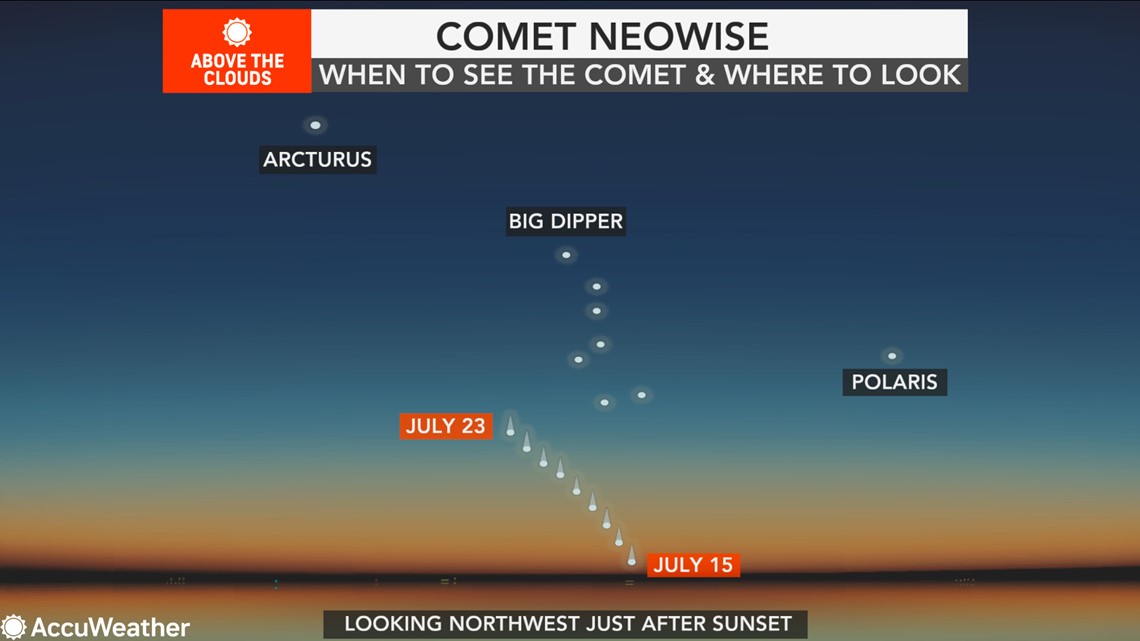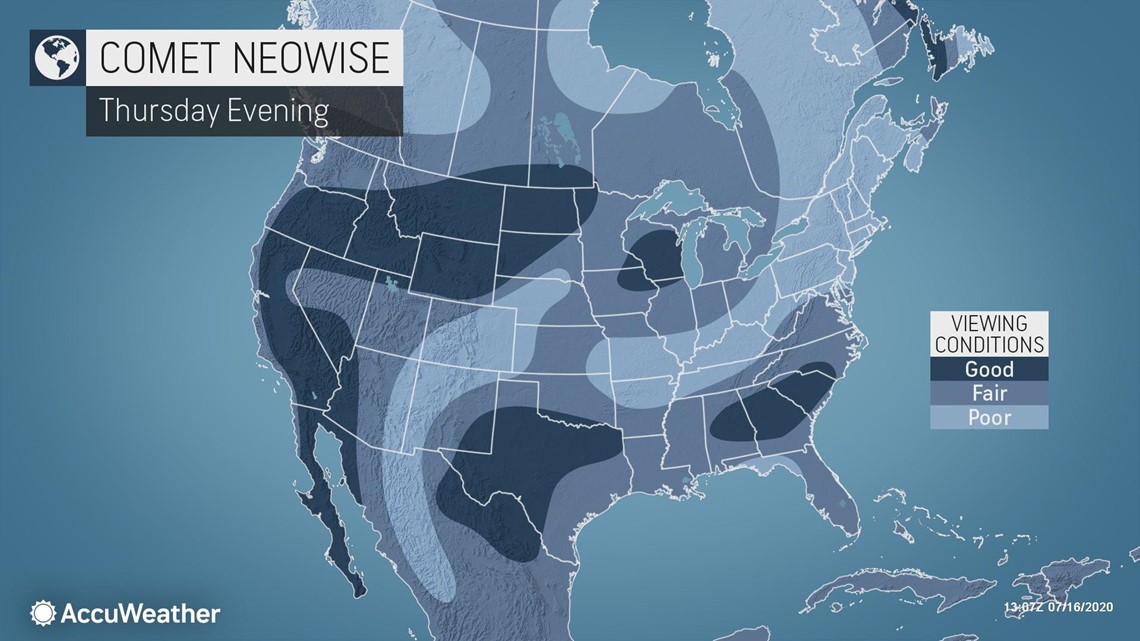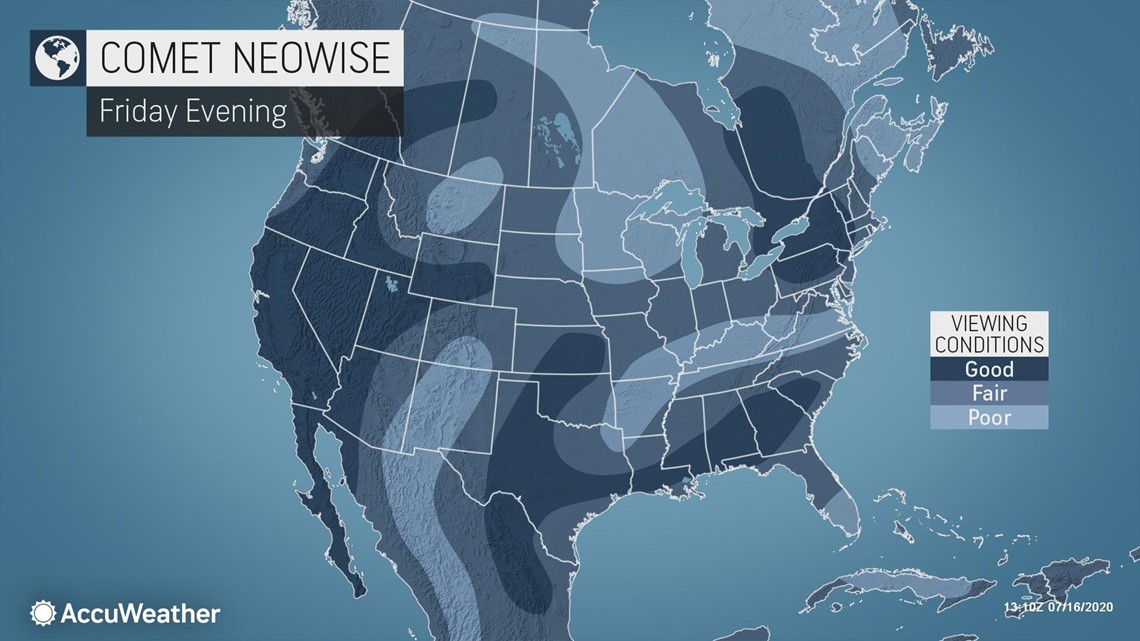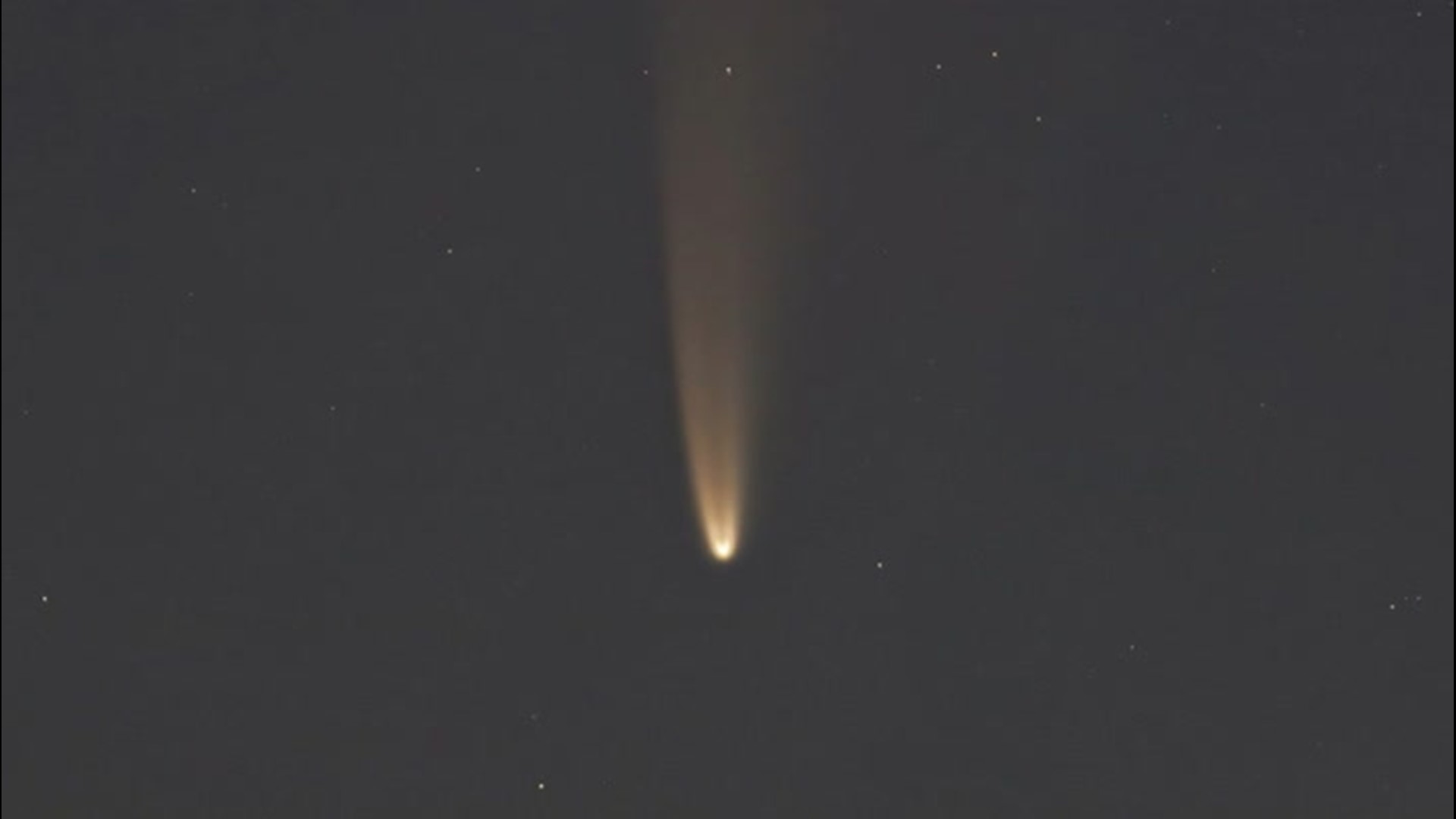The rare opportunity to spot a comet has arrived for evening skywatchers, and people may want to plan accordingly to look for the object on a clear night before it fades away.
Comets are far less predictable than the weather, and after NEOWISE passes, it is unclear when the next chance will come to spot a comet in the night sky.
"Discovered on March 27, 2020 by NASA's Near-Earth Object Wide-field Infrared Survey Explorer (NEOWISE) mission, Comet NEOWISE is putting on a dazzling display for skywatchers before it disappears, not to be seen again for another 6,800 years," NASA said.
After being visible only in the early morning sky through the first half of July, the comet is now a feature in the evening sky, becoming visible about one or two hours after sunset.
Onlookers can spot the comet in the northwestern sky below the constellation Ursa Major (also known as the Big Dipper) through July 23, with it appearing slighter higher in the sky each night. By the last weekend of July, Comet NEOWISE will begin to fade as it moves farther away from the sun and the Earth on its journey back into the far reaches of our solar system.


Comet NEOWISE is visible to the naked eye, but it is still very dim. Light pollution can make it difficult to spot the comet, so people should try to head to a dark area away from city lights with a clear view of the northwestern sky. Humid, hazy air can also have an effect on viewing conditions.
"If you're looking at the sky without the help of observation tools, Comet NEOWISE will likely look like a fuzzy star with a bit of a tail, so using binoculars or a small telescope is recommended to get the best views of this object," NASA said.
The best viewing conditions on Thursday night are expected across the southern United States and across much of the interior West with mainly cloud-free weather anticipated after sunset.
Meanwhile, Americans hoping to catch a glimpse from the Northeast to the Four Corners may have to wait until the weekend for the next chance to spot Comet NEOWISE.


Weather conditions will improve across much of the Northeast and into Ontario and Quebec on Friday, giving skywatchers the opportunity to kick off the weekend with sightings of Comet NEOWISE.
Clear conditions are also in the forecast for the Deep South and across the West while some clouds could obscure the view for people around the Four Corners, western Great Lakes and Tennessee Valley.


Even with the use of binoculars or a telescope, Comet NEOWISE will not look like many of the photos that are being shared on social media.
To capture breathtaking images of the comet, photographers are using long-exposure photography. This allows the camera to take in more light from the comet over several seconds, producing an image that is much different from what the human eye perceives.
In most cases, photographers are using cameras such as a digital single-lens reflex camera (DSLR), but some smartphones are able to take photos with an exposure of a few seconds. An image taken from a smartphone will be much different than one taken with a DSLR, but a smartphone image could help folks find the comet in the sky.
After Comet NEOWISE fades away, it will not become visible in the night sky again until its next trip into the inner solar system in 6,800 years.
Long-period comets like NEOWISE are very difficult to predict because they take so long to orbit the sun and are often not discovered until a few months before they pass close to the Earth. Because of this, it is difficult to say for sure when the next one will be visible in the night sky.
This is much different than short-period comets that visit the inner solar system on a more regular basis. Halley's Comet is one of the most famous short-period comets and orbits the sun once every 75 years.
With detailed recordings of the comet over recent centuries, scientists know exactly when Halley's Comet will return and where it will be seen in the night sky.
People hoping to see Halley's Comet will need to wait another 41 years as it will not pass through the inner solar system again until July of 2061. In all likelihood, another comet will glow in the night sky before Halley's return, but stargazers will need to be patient and wait for the next comet to emerge from the depths of space.

